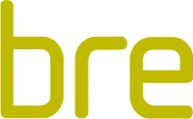 Interoperability of data has been on my mind lately – Bricsys’s advocacy of IFC and the multi-vendor supported .DWG file format was highlighted last week, and yesterday we had the announcement of the merger of the UK BIM Alliance and buildingSMART UK&I. So I was interested to read that the UK’s BRE has launched a free-to-use and free-to-list BIM Product Library which will serve as an immutable, definitive and universal data store for all BIM data.
Interoperability of data has been on my mind lately – Bricsys’s advocacy of IFC and the multi-vendor supported .DWG file format was highlighted last week, and yesterday we had the announcement of the merger of the UK BIM Alliance and buildingSMART UK&I. So I was interested to read that the UK’s BRE has launched a free-to-use and free-to-list BIM Product Library which will serve as an immutable, definitive and universal data store for all BIM data.
BRE says DataBook will help to overcome current costly and time-consuming fragmentation issues, providing a compliant, trusted and standardised model that the entire supply chain can access and utilise. As the BRE announcement (made during Digital Construction Week) says:
“… current BIM software providers use different standards, without offering a complete range of building elements which the user can draw from, and are often non-compliant with the British Standard BS8541. Furthermore, the fragmentation in software has prevented seamless communication between different parties.”
The free, industry-disruptive DataBook Product Library allows registered users to link their BIM objects and associate data to a fixed manufacturers’ data source. In Beta testing and set to launch in early 2018, DataBook will provide plug-in functions for authoring tools with options to link and to attach data based upon project stage and appropriate project roles. This will remove the liability and risk for designers and constructors from using editable BIM Library objects, whilst providing them with the appropriate manufacturer data that they need to respond to the project requirements throughout the project lifecycle.
 BRE has also created a new Templater tool that holds the standard for exchanging data, including product data. This will remove the confusion and lack of interoperability that has surrounded sharing standardised product information from BIM and associates technologies. BRE Templater (with code by Activeplan – founded by George Stevenson and Tim Aikin, former colleagues of mine at what was then BIW Technologies) will provide core building element definitions (like doors, windows, plaster board, roof tiles, etc.), and is built on international standards such as IFC. Paul Oakley, BIM Director at BRE said:
BRE has also created a new Templater tool that holds the standard for exchanging data, including product data. This will remove the confusion and lack of interoperability that has surrounded sharing standardised product information from BIM and associates technologies. BRE Templater (with code by Activeplan – founded by George Stevenson and Tim Aikin, former colleagues of mine at what was then BIW Technologies) will provide core building element definitions (like doors, windows, plaster board, roof tiles, etc.), and is built on international standards such as IFC. Paul Oakley, BIM Director at BRE said:
“The new DataBook will provide a much-needed process to manage information flow during the design and build process, without the complex geometry that exists currently. This will help make BIM work for everyone, as currently too much manual object changing is required as projects are transferred between manufacturers, architects and contractors. Given the substantial savings in time and money, DataBook will quickly become the go-to development source in the building industry.”
DataBook will have a premium, paid for element. Services will include BRE independent assessment of the validity of the data available to each BIM object. BRE will check whether the information source is correct and co-ordinated, and content requirements, including manufacturer and contractor-specific contents, will also be verified. BRE is currently in talks with manufacturers, including Tata Steel and Wienerberger, regarding the listing of products in DataBook.
Update (6 November 2017) – Via LinkedIn, Paul Morris asked:
The BRE Databook appears to deliver standardized BIM information to the industry in a similar manner to the NBS National BIM Library? Will the BRE model deliver improved interoperability and will the BIM object content be categorized based on its level of definition (LOI + LOD)? Can you add any further insight into this?
Via George Stevenson, I got the following response from Paul Oakley at BRE:
The Templater provides the BIM Data standards and presently implements the IFC data schema using IFC 4. If you know how to implement the IFC 4 Docs version you should get exactly the same data standard. These are open for anyone to use including NBL. Future Product Templates will meet further industry identified needs
The BRE Databook allows values to be stored against the Data Templates provided by the BRE Templater. NBL is based upon the 2×3 schema with some updates to IFC 4 so they will have a large percentage of this already. The Templater also provides the opportunity to define what Stage and which Actors an attribute can be associated with. Therefore this can provide a LOI based upon the IFC Schema for specific stages. This is also implemented within the DataBook but other solutions could make use of this via the templater.






